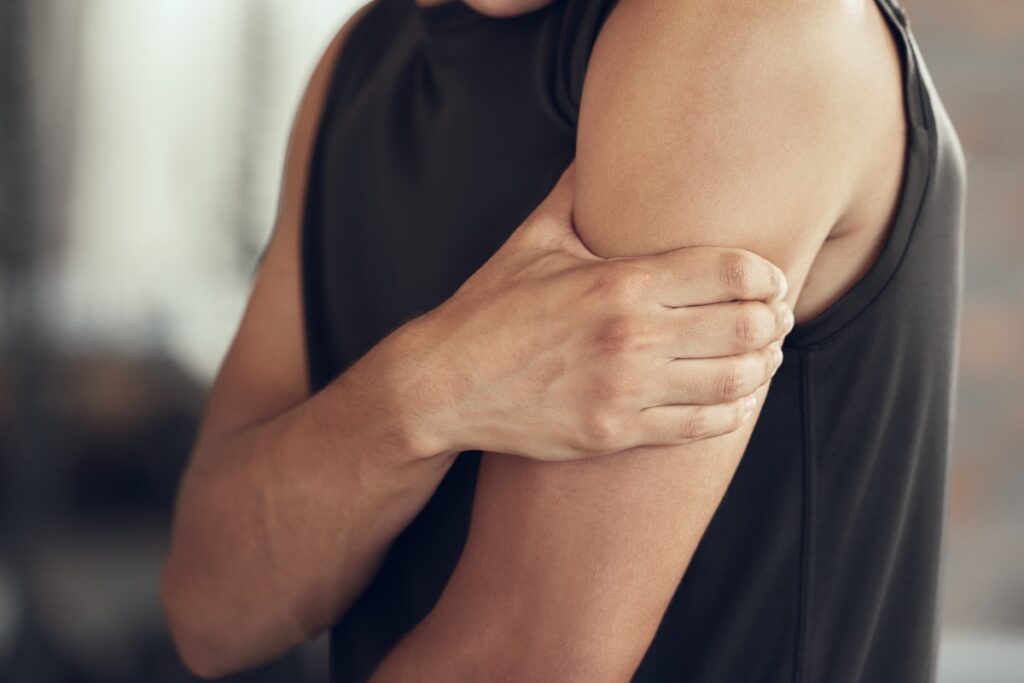
Do you experience pain and discomfort on the back of your elbow when performing overhead activities or pushing something away from your body? You might be suffering from triceps tendinopathy. This condition occurs when the tendon connecting your triceps muscle to your elbow joint becomes inflamed or irritated due to overuse, aging, or a sudden injury. As a physiotherapist or chiropractor, it’s essential to know how to identify and treat this problem to relieve your patients’ pain and improve their function. In this blog post, we’ll discuss the symptoms and treatment options for triceps tendinopathy to help you support your patients better.
Signs and Symptoms of Triceps Tendinopathy
Triceps tendinopathy can cause a wide range of symptoms that vary in type and severity. The most common signs include:
- Pain and tenderness on the back of the elbow, which worsens with activity or in the evening
- Stiffness and reduced range of motion in the elbow joint
- Weakness and difficulty gripping or lifting objects
- Swelling and redness around the elbow joint in severe cases.
Often, patients report the pain is more focused on the elbow than the triceps area.
Causes and Risk Factors of Triceps Tendinopathy
Triceps tendinopathy can develop due to a variety of factors, including:
- Repetitive overhead activities, such as throwing, painting, or hammering
- Sudden impact or trauma to the elbow joint
- Aging, which can cause wear and tear on the tendons and decrease their flexibility and strength
- Poor posture and muscle imbalances, which can put excess stress on the elbow joint
- Arthritis or other degenerative joint conditions.
Treatment Options for Triceps Tendinopathy
The first step in treating triceps tendinopathy is to rest and protect the affected elbow joint to avoid further irritation. Then, the following treatment strategies can help alleviate pain and promote healing:
- Physiotherapy exercises, such as elbow stretches and strengthening activities
- Ice therapy and heat therapy to reduce inflammation and improve blood flow
- Nonsteroidal anti-inflammatory drugs (NSAIDs) to relieve pain and swelling
- Corticosteroid injections to reduce inflammation in severe cases
- Ultrasound or extracorporeal shockwave therapy (ESWT) to promote tissue repair and regeneration
- Surgery, in rare cases, to remove the damaged tendon and repair the elbow joint.
Prevention Tips for Triceps Tendinopathy
While triceps tendinopathy can occur due to unforeseen events, such as sporting injuries, there are several steps that can be taken to prevent long term issues from developing:
- Gradually increase the intensity of exercises and avoid sudden increases in activity levels
- Use proper technique during physical activities, especially overhead movements
- Maintain good posture and regular stretching
- Strengthen your forearm, wrist, and upper arm muscles to help support your triceps tendons
- Seek medical attention at an early stage of pain – early intervention typically results in a more favourable outcome.
Triceps tendinopathy is a common condition that can cause pain and discomfort in the elbow joint, limiting the patient’s mobility and function. As a physiotherapist or chiropractor, understanding the symptoms, risk factors, and treatment options for this condition is essential to provide appropriate care to your patients. By promoting rest, targeted therapy, and addressing poor posture or repetitive activity, you can help your patient’s recovery and alleviate their pain. Remember, prevention is always better than cure – so make sure to help your patients select the right exercises and movements to avoid further injury.
If you have any questions or would like to explore further, please book a free, no-charge online appointment with either myself, Nitin Nair, BPT, R/TRO DIP, PT, or another Kitchener physiotherapist at CARESPACE. We are happy to listen and are here to help!

